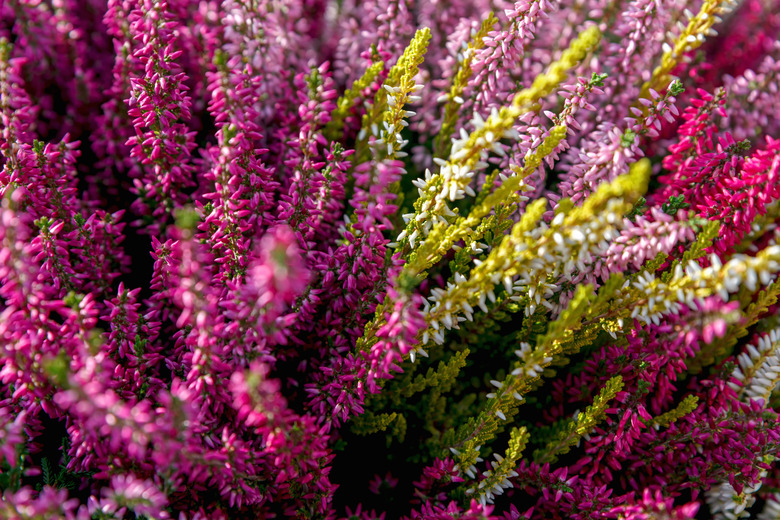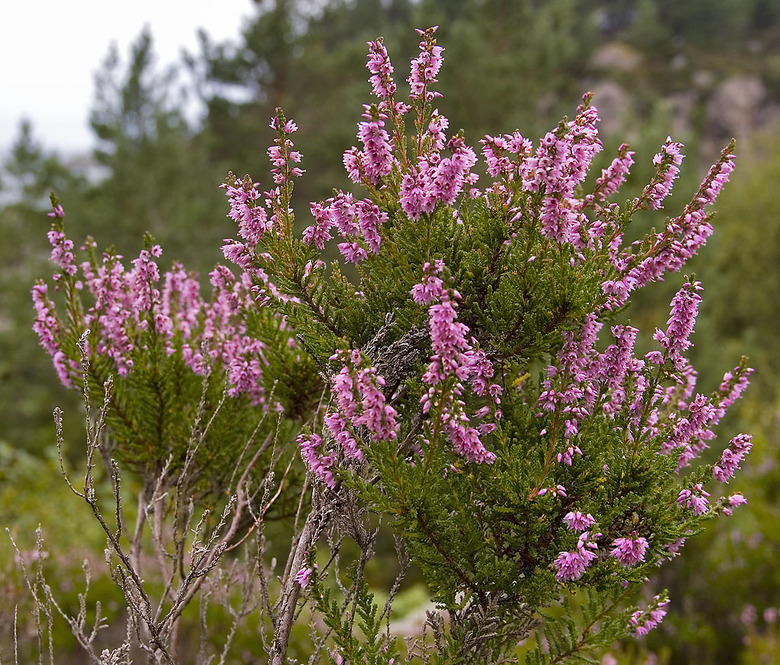How To Care For Heather Plants
Less is more when it comes to growing heather at home. Sometimes called Scotch heather, heather (Calluna vulgaris) grows best within U.S. Department of Agriculture plant hardiness zones 4 to 6, where it thrives in poor soil and cool conditions.
Heather is a low maintenance plant because it performs well with little care and it rarely suffers from serious pest and disease problems. However, as with most perennials, heather will look better, live longer and bloom more prolifically if provided with a little hands-on maintenance throughout the year.
Heather performs well with little care and rarely suffers from serious pest and disease problems. It is also a perennial, so it should come back the following year.
Watering and Feeding Heather Plants
Heather plants need regular watering to stay healthy, particularly in warmer climates where the soil tends to dry out. Provide 1 inch of water each week during the summer months with a little extra during periods of extreme heat.
Mulching will help conserve soil moisture and eliminate the need for frequent watering. Use a 2-inch-thick layer of shredded pine bark mulch, which will enrich and acidify the soil as it breaks down.
Heather plants need little to no fertilizer, although plants grown in very sandy or rocky soil with little nutrient content may benefit from a light side-dressing of compost in spring. Spread a thin layer of compost around the base of the plant, and cover it with a light mulch layer afterwards to protect the roots until new foliage growth emerges. Be sure that neither the compost nor the mulch touch the base of the stems.
Tip
Avoid passing pathogens from plant to plant by disinfecting your pruning shears regularly.
Pruning Heather Plants
Before pruning, wash your pruning shears and spray the blades with disinfecting cleaner to kill off any pathogens that might infect your heather plant. Use a stiff-bristled brush and hot, soapy water to clean your shears and remove any caked-on dirt and plant debris. Apply undiluted household disinfectant and let it sit for at least 2 minutes before using the shears.
Early spring before new growth appears is the best time to prune heather plants. Spring pruning is especially important for older heather plants that may have leggy growth with bare stems. Cut back heather plants to within 1 inch of the previous year's growth, which is the woody portion of the stem near the base. Prune out dead branches whenever they appear throughout the year.
Troubleshooting Heather Shrubs
Heather rarely suffers from serious problems when grown in the right climate and under the right conditions, but it can sometimes develop issues with spider mites and oystershell scale.
Both pests cause minor damage such as yellow growth and wilting in heavily infested stems. However, both problems are also easy to diagnose and to effectively treat, if you know what to look for.
Spider Mites
Spider mites produce silk webs on the leaves. Remove spider mites by spraying them with a strong jet of water. Treat stubborn spider mite infestations with insecticidal soap or horticultural oil. Be sure to follow the label directions when working with either product.
Oystershell Scales
Oystershell scale appear as waxy dots on stems and leaves. Treat oystershell scale in early spring using horticultural oil, which will smother the eggs and prevent them from hatching. Follow up treatment with insecticidal soap in summer after the eggs have hatched.
Tip
Use horticultural oil on cool mornings when temperatures are well below 90°F because applying it during hot weather can damage the plant.
References
- North Carolina State University Cooperative Extension: Calluna vulgaris
- Missouri Botanical Garden: Calluna vulgaris
- Oregon State University Department of Horticulture: Calluna vulgaris
- Fine Gardening: Scotch Heather
- University of Minnesota Extension: Clean and Disinfect Gardening Tools and Containers
- Seattle Times: You Need to Shear Your Heathers and Heaths to Prevent Bare, Woody Stems
- UC Integrated Pest Management Program: Spider Mites
- Iowa State University Extension: Oystershell Scale

